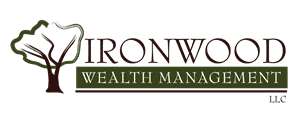Being self-employed comes with incredible benefits — freedom, flexibility, and control over your financial future. But when it comes to retirement planning, the responsibility falls entirely on you. Unlike traditional employees with 401(k)s and pensions, self-employed individuals must create their own savings strategy.
If you’re an entrepreneur, freelancer, or small business owner, you may already have a plan in place. But is it still the best fit for your long-term goals? This guide explores the most effective retirement options for self-employed individuals, their tax advantages, and key considerations to help you maximize your savings.
Choosing the Right Plan for Your Business & Goals
Even if you already contribute to a plan, it’s wise to periodically reassess your options as your income, business structure, or financial goals evolve. Here is an overview of the top choices for self-employed individuals:
1. Solo 401(k): Best for High Earners with No Employees
A Solo 401(k), or an Individual 401(k), is a retirement plan designed specifically for self-employed individuals with no employees other than a spouse.
Key Benefits:
- Contribution limits for 2025 are up to $70,000 (or $77,500 if 50 or older).
- Contributions are tax-deductible, reducing taxable income.
- Option to make Roth 401(k) contributions for tax-free withdrawals in retirement.
- Ability to take a loan from the plan if needed.
Key Considerations:
- Must switch plans if you hire non-spouse employees.
- IRS Form 5500 required if assets exceed $250,000.
Best for: Self-employed individuals looking for a flexible, high-limit retirement plan with the added option of Roth contributions and loan access.
2. SEP IRA: Simple & Scalable for Business Owners
A Simplified Employee Pension (SEP) IRA is a tax-advantaged retirement plan that allows employers to make contributions to traditional IRAs set up for themselves and their employees.
Key Benefits:
- Contributions up to 25% of net self-employment earnings, capped at $70,000 for 2025.
- Contributions are tax-deductible and vest immediately.
- Flexible annual contributions (can vary or skip in slow years).
Key Considerations:
- If you have employees, you must contribute the same percentage for all (including yourself).
- Employees can’t contribute — only employers.
Best for: Sole proprietors seeking a high-limit, low-maintenance retirement plan, with the option to include employees if the business grows.
3. SIMPLE IRA: A Low-Cost Option for Small Businesses
A Savings Incentive Match Plan for Employees (SIMPLE) IRA is a retirement plan designed for small businesses with 100 or fewer employees that allows both employer contributions and employee salary deferrals.
Key Benefits:
- Personal contributions are tax-deductible.
- Employer contributions (3% match or 2% flat) are tax-deductible as a business expense.
- Employees can contribute to their own plans.
- Less admin than a traditional 401(k).
Key Considerations:
- Annual employer contributions are mandatory.
- The same employer contribution method must be used for yourself and any employees.
- Lower contribution limits than a Solo 401(k) or SEP IRA.
Best for: Self-employed individuals who want a simple, lower-cost way to contribute to their own retirement while offering employee benefits.
4. Defined Benefit Plan: Best for High-Income Self-Employed Individuals
A Defined Benefit Plan is a pension-style retirement plan where contribution amounts are based on a formula intended to provide a fixed income in retirement.
Key Benefits:
- Higher contribution potential than most other plans ($280,000 for 2025).
- Predictable, pension-like retirement income.
- Contributions are tax-deductible.
Key Considerations:
- Requires actuarial calculations and consistent annual funding.
- More administrative upkeep than other plans.
Best for: High-income, self-employed individuals who want to make large contributions and follow a structured long-term plan.
5. Traditional or Roth IRA: A Supplement to Other Plans
Even if you contribute to a Solo 401(k), SEP IRA, or SIMPLE IRA, a Traditional or Roth IRA can be an additional savings tool.
Key Benefits:
- 2025 contribution limit: $7,000 ($8,000 if 50+).
- Roth IRAs offer tax-free withdrawals.
- Traditional IRAs provide tax-deferred growth.
- Easy to set up with no employer duties.
Key Considerations:
- Lower annual contribution limits than other plans.
- Income restrictions apply for Roth contributions and Traditional IRA deductibility.
Best for: Self-employed individuals who want to supplement other plans with additional tax-advantaged savings.
6. Health Savings Accounts (HSAs): A Triple-Tax-Advantaged Strategy
While not a traditional retirement account, a Health Savings Account (HSA) can play a powerful role in your long-term retirement savings strategy.
Key Benefits:
- Tax-deductible contributions, tax-free growth, and tax-free withdrawals for medical expenses.
- Funds roll over annually and stay with you, even into retirement.
- Investable once a minimum balance is met, offering long-term growth potential.
Key Considerations:
- Only available if enrolled in a high-deductible health plan (HDHP).
- Non-medical withdrawals before 65 are taxed and penalized.
Best for: Self-employed individuals with HDHPs who want to save tax-efficiently for healthcare costs in retirement.
Investing Beyond Retirement
There are other ways to grow your wealth outside of retirement accounts. For many self-employed individuals, diversifying beyond retirement plans can enhance flexibility, liquidity, and long-term financial security.
Brokerage Accounts: A taxable investment account offers flexibility. While you’ll pay capital gains tax, you can store a variety of investments without contribution limits or early withdrawal penalties.
Business Investments: If done wisely, reinvesting in your own business or other entrepreneurial ventures can generate returns that far outpace traditional markets.
Tax Strategy Still Matters: Just because an account isn’t “tax-advantaged” doesn’t mean you can’t utilize other tax-efficient strategies such as capital gains harvesting, tax-loss harvesting, and asset location strategies.
The Bottom Line: Make Sure Your Plan is Working for You
Your retirement success depends on today’s choices. Start early, optimize your strategy, and align your savings with long-term goals. Need help choosing the right plan? Our advisors can help you build a tax-smart, personalized retirement roadmap.
Schedule a consultation today, and let’s create a comprehensive financial plan for a secure and prosperous retirement.





